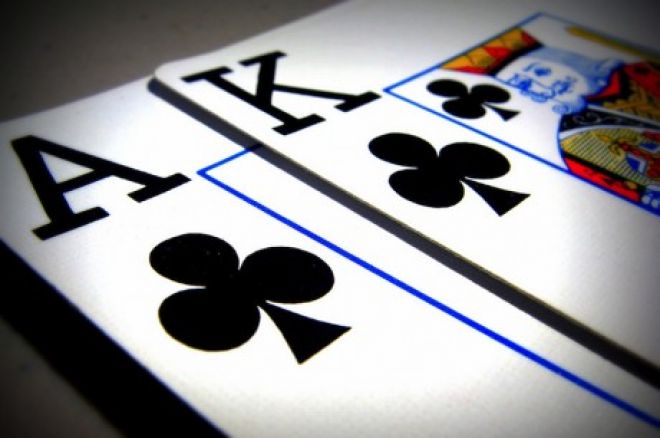A Planning Exercise: What If I Get Ace-King?

If you are a diligent student of poker, your head is full of poker lessons, guidelines, and memories. You might like to bring all that information to bear on every hand you play, but there are at least two obstacles to doing that.
First, there’s more information in your head than you can process in real time during any one hand. Second, there’s not always a clear way to apply that information to the hand. A general willingness to think about a poker situation isn’t itself enough to make what’s in your brain useful.
As you gain experience you will naturally develop ways to apply your knowledge to hands as they arise, but it is still useful to have some standard questions to ask yourself at the table. One that I’ve found surprisingly useful is to ask myself “What if I get ace-king next hand?”
Yes, AxKx is just one hand, and yes, aggression (at least preflop) is usually mandatory when you have it. There’s still plenty to think about, though. The extreme strength of AxKx comes both with flexibility and with sensitivity to game conditions. Every hand is sensitive to game conditions, but most players will find more reasons to vary their play with AxKx than with, for example, small pocket pairs.
Here are some issues that planning for AxKx ought to make you consider:
1. You will usually want to reraise against opening raises, but to what size?
To answer this question, you will have to think about the likeliest opponents to raise, what their stacks are, and what the stacks of the opponents on your left are.
2. Sometimes you won’t want to reraise.
Although AxKx is a very strong hand, there are times where you do better by calling than by folding. There are two common situations when this is the case.
First, sometimes your opponent’s raising range is so strong that AxKx just isn’t good enough to reraise for value. These spots usually arise against tight early-position raisers.
Second, sometimes your opponent’s range is not particularly strong, but does contain many weaker aces and kings that you dominate. If almost all of these dominated hands will fold to a reraise, it is sometimes better to just call the raise so as to realize a large playing edge later against those hands. These are situations where reraising is profitable but the chance to take a flop against a specific range is even better.
3. Under certain conditions, limp-reraising is a possibility.
I often play in games where there are many active players who are likely to raise early-position limps. The cumulative effect of these tendencies, and the simple probability that one of many opponents will find a decent hand, is to make it very likely that you have the opportunity to limp-reraise. These table conditions don’t always happen, and even when they do it is often correct to raise instead of limp-reraise, but it is an option you should at least consider.
None of this is advice to look for fancy plays with AxKx. Again, it will usually be correct to raise or three-bet this hand to a standard size. Notice, though, what we’re forced to consider simply by imagining the AxKx possibility:
- Who is likely to raise?
- What are those players’ raising and raise-calling ranges?
- What are everyone’s stacks?
- How likely are players on your left to get involved in a multiway pot?
Having actively considered all these questions will benefit you, whether you are next dealt AxKx or any other hand.
Be sure to check out Nate and Andrew Brokos on the Thinking Poker podcast, and for more from Nate visit his blog at natemeyvis.com.
Photo: “Ace King of Clubs,” Jim Lynch, Creative Commons Attribution-NonCommercial-NoDerivs 2.0 Generic
Get all the latest PokerNews updates on your social media outlets. Follow us on Twitter and find us on both Facebook and Google+!








